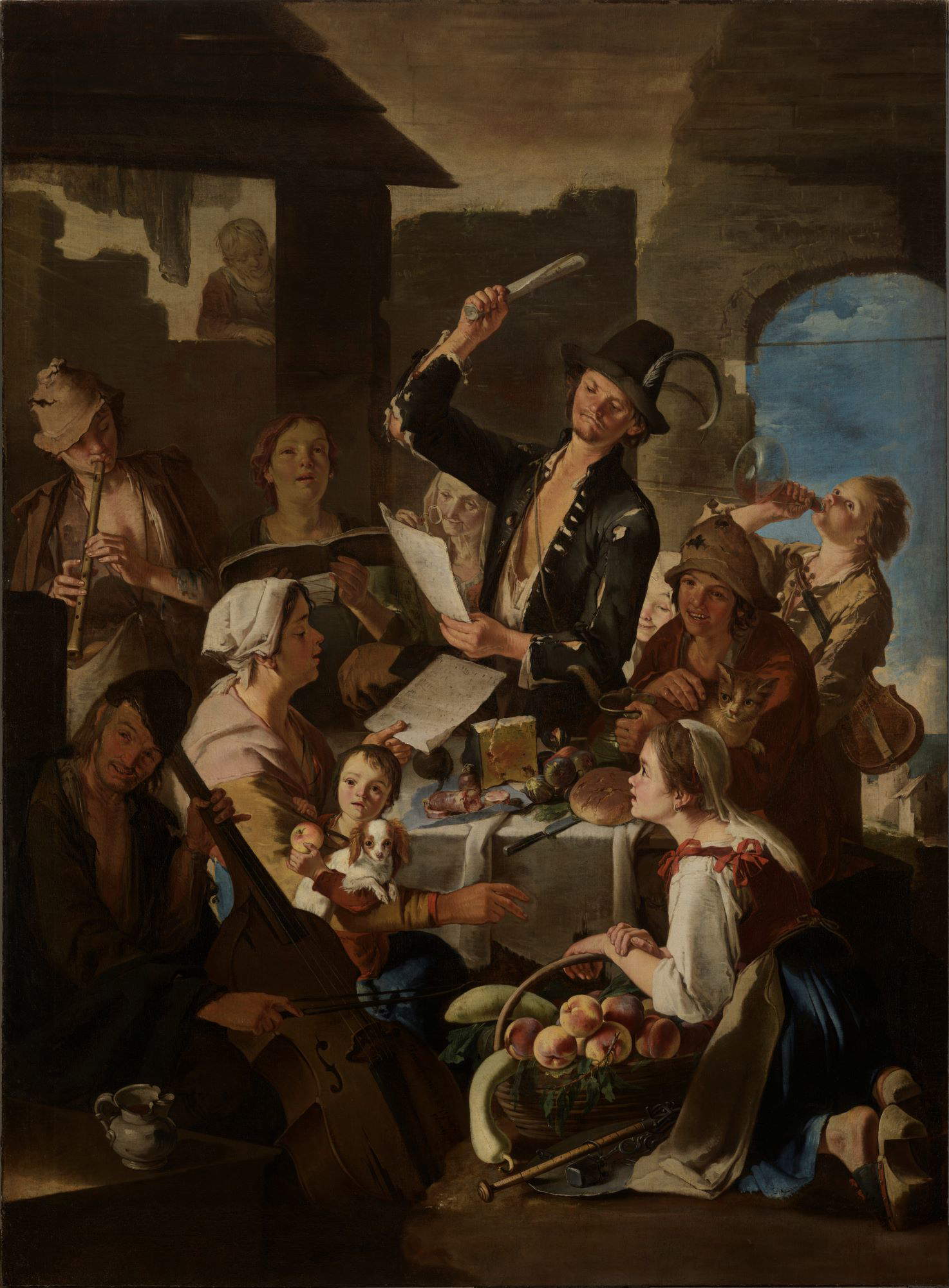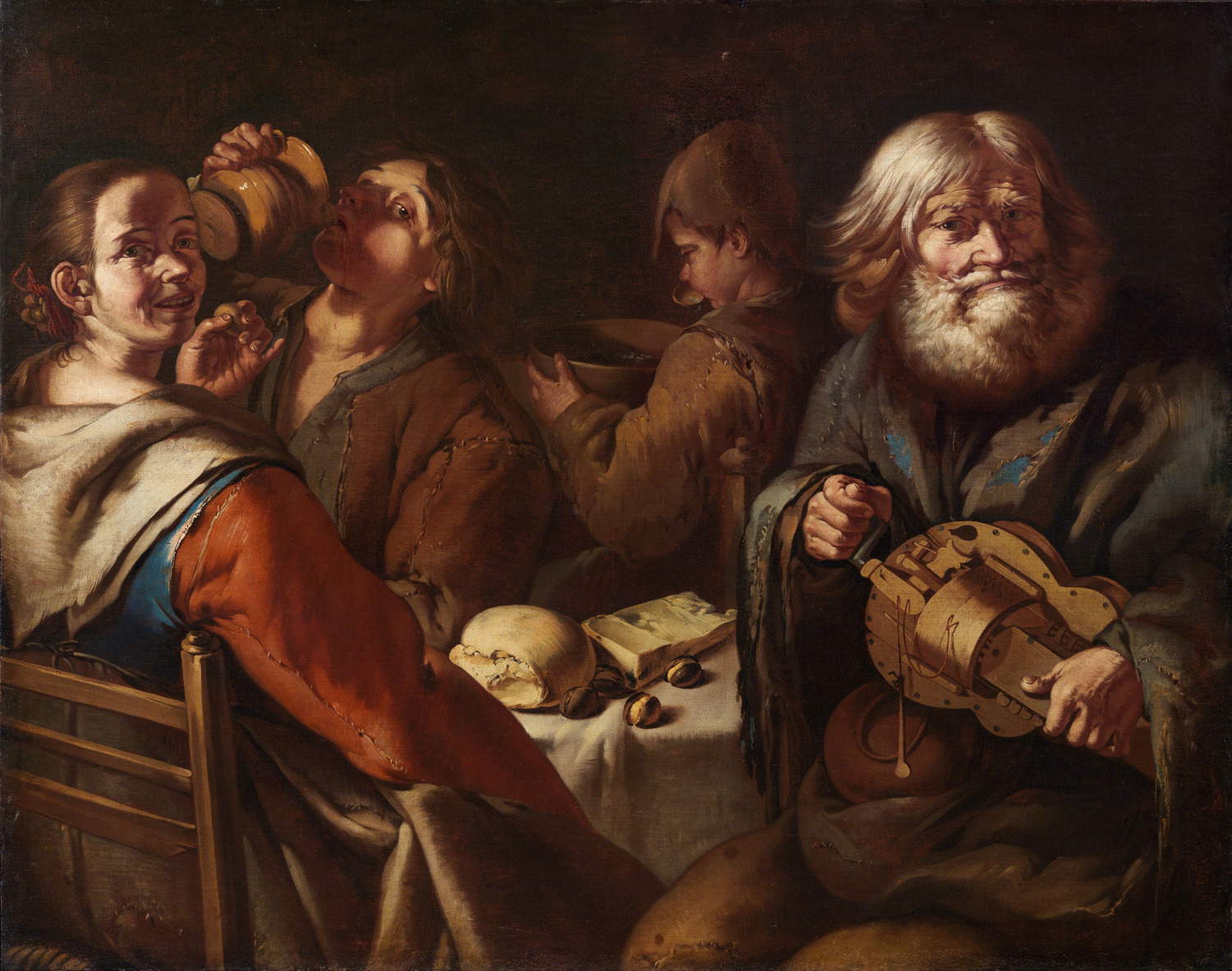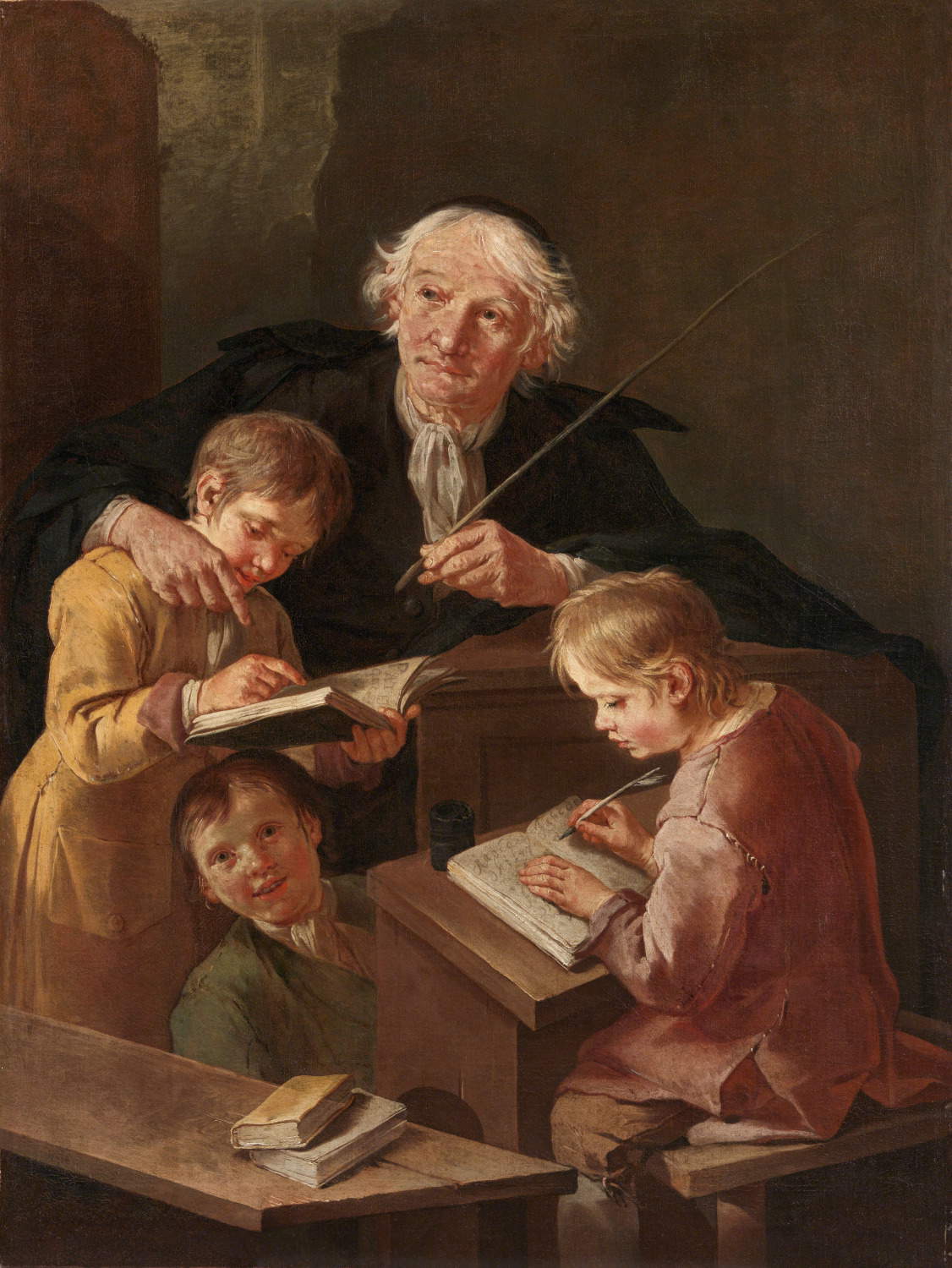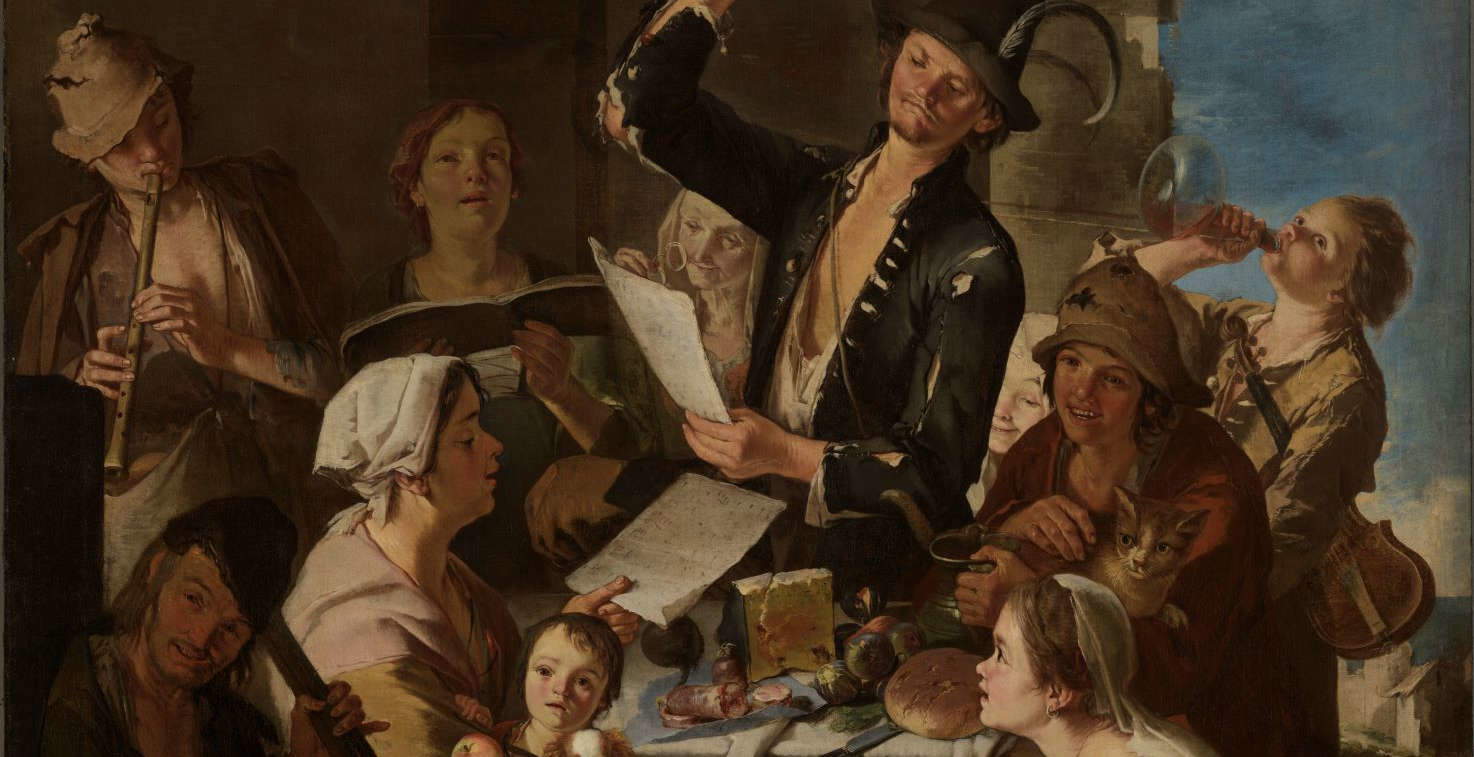Brescia ’s Pinacoteca Tosio Martinengo enriches its permanent collection with a new masterpiece. It is the Gypsy Concert by Giacomo Francesco Cipper (Feldkirch, 1664 - Milan, 1736), a naturalized Austrian-Italian artist active in the late 17th and first half of the 18th century. The work, owned by the Peloso family, arrives in the city on long-term loan and represents a major acquisition that further consolidates the Brescian museum’s role as an international point of reference for the study of genre painting and the pauperist current in particular.
The lively and animated concert scene is one of the most frequent subjects in the production of Cipper, who knew how to blend attention to detail, psychological characterization of the characters and highly effective stage construction. The Gypsy Concert is a particularly significant example of his art: its considerable size, excellent state of preservation , and pictorial quality make it one of the painter’s most mature and successful works. Its prominence was confirmed by its inclusion in the recent monographic exhibition dedicated to Cipper at the Castello del Buonconsiglio in Trento, an event that offered a comprehensive overview of the artist’s work and his influence on the European scene.
The painting boasts a long collecting history. Having entered the Peloso family’s collections in the mid-19th century, it was originally placed in the antechamber of the family’s Genoese palace, formerly owned by Rivarola. In 1864 it was transferred to the residence in Novi Ligure, where it found a place in the dining room, reflecting the central role that genre painting had assumed in nineteenth-century collecting taste. The work, which has remained in the family’s possession until today, has now been entrusted to the Brescian museum to ensure maximum scientific and cultural appreciation.
Crucial to the landing of the Gypsy Concert at the Pinacoteca was the intervention of Professor Fernando Mazzocca, an internationally renowned art historian and former professor at the State University of Milan. Mazzocca identified the Brescian museum as the ideal venue to welcome and acquaint the public with this painting, considered among the most representative testimonies of pauperist painting. The term “pauperist” is often associated with Giacomo Ceruti, known as “il Pitocchetto,” the greatest interpreter of the genre, but the roots of the movement lie precisely in the work of Cipper, who was its forerunner and protagonist in Milan, where they both worked.
The Pinacoteca Tosio Martinengo holds the world’s largest collection of Ceruti’s works and offers a unique context for understanding the interactions and dialogues between the two artists. Although different in style, Cipper and Ceruti shared the choice to represent the working classes and their environments with realism and dignity, challenging the artistic canons of the time dominated by aristocratic and religious patronage. The arrival of the Gypsy Concert thus allows for the enrichment not only of the exhibition itinerary, but also of the scientific investigation and reflection on the role of this pictorial current in the history of European art.
The painting will be exhibited in Room XIV of the Pinacoteca, next to two other works by Cipper already in the collection: The Master’s Lesson and The Pitocchi’s Breakfast with Old Hurdy-gurdy Player. These paintings had come to Brescia thanks to the generous donation of Clara Bottarelli Gramignola in memory of her husband Pierangelo, a great lover of pauperist painting. The new arrival, the result of the willingness of the Peloso family, further strengthens this nucleus, creating a coherent and highly interesting section within the museum.
The collaboration between public institutions and private collectors is thus confirmed as decisive for the growth of civic collections. In fact, the Gypsy Concert continues the line of enrichment of the Pinacoteca, which in 2022 was able to welcome eight new canvases by Ceruti thanks to the generosity of the owners, expanding the city’s already extraordinary heritage. The vocation of the Pinacoteca as a center for the study and dissemination of pauperist painting is not only about conservation, but also about promoting critical reflection on the evolution of figurative languages and the role that the representation of the subaltern classes played in 18th-century society.

The Gypsy Concert, a work signed on the musician’s cello on the left, depicts a concert, a very recurring subject in Cipper’s production. “It is, however, quite exceptional,” explains art historian Nicola Turati , who supervised the study of the painting, “such a dense presence of figures: standing at the center, the pivot of the entire composition, is the conductor, wearing a feathered hat and wearing a ragged jacket open over his bare chest. Around him huddles the entire band: a cello player, a flute player and a violinist -- who, placing his instrument under his arm, is guzzling wine -- as well as a number of singers, mostly women, of all ages. Kneeling in the foreground is a young fruit seller, perhaps returning from her sales trip, while seated at the center table are a mother with her child in her arms -- who in turn holds a small dog -- and a smiling young man holding a cat and drinking from a pitcher. They all dress in tattered, ragged clothes that identify them as commoners, perhaps gypsies, and they are placed outdoors, within a courtyard overlooked by ruined buildings.”
“The atmosphere,” Turati continues, “is relaxed and smiling, and there is no lack-as is typical of Cipper’s scenes-of more or less explicit erotic allusions. The latter are conveyed not only by the gestures and winks of the characters, but also by the symbolic value assumed by other elements, only apparently accompanying, present on the scene: the pumpkins, peaches, cheese, salami, bread, knife, jug and figs, which would refer, from time to time, to the female or male sexual sphere, according to a well-established iconographic tradition. Stylistically, the work fully reflects the peculiar features of Cipper’s production, such as the composition of figures according to diagonal directives and the assembly of recurring prototypes according to a ’patchwork’ system. The gesture of the conductor with his arm raised, for example, returns in other concerts by Todeschini, as well as in his numerous depictions starring the schoolmaster. Other typical elements are the predilection for a palette settled on brown tones, although enlivened by isolated highlights of white, red and blue, and the ”theatrical“ use of light, which turns figures on and off with scenic intent.”
“As usual,” the scholar concludes, “Cipper tints his works with extraordinary still life inserts, laid out with a rapid and compendious stroke that enlivens the impression of real perception. Exemplary, in this regard, is the table with food in the center of the scene or the basket of fruit in the foreground. The work stands out in pictorial quality as one of the most successful proofs of Cipper’s maturity, distinguishing itself also by the effectiveness of the overall scenic layout, to which the considerable dimensions contribute, and by its excellent state of preservation.”


"The entry of Giacomo Francesco Cipper’s Gypsy Concert into the Tosio Martinengo Art Gallery," says Laura Castelletti, mayor of Brescia, “significantly enriches our collections and confirms the prestige of our museum system. With this new arrival, which brings the number of Cipper’s works on display in the Pinacoteca to three, we further strengthen the already substantial nucleus of the artist’s paintings in our collections. The fact that a private collection has chosen our Civic Museums in particular to grant this valuable work for deposit testifies to the quality and attractiveness of our cultural institutions. Our commitment to making the heritage of the Civic Museums ever richer and more qualified proceeds with determination, with the aim of offering citizens and visitors a cultural experience of excellence.”
"The arrival of Giacomo Francesco Cipper’s Gypsy Concert at Pinacoteca Tosio Martinengo," stresses Francesca Bazoli, president of Fondazione Brescia Musei, “is all the more significant because it is the result of the generosity of a non-Brescian family. It is a recognition of great symbolic value, which rewards the work carried out in recent years by Fondazione Brescia Musei to enhance and strengthen the 18th-century section of our Pinacoteca. This result is part of a long-term and as yet unfinished journey, which began with the remounting of the section dedicated to the 18th century and culminated in the great Ceruti project, which has received international recognition. Precisely with this in mind, the Museum has been able to progressively enrich itself with works that have expanded and deepened the narrative of genre and pauperist painting.”
“Borrowing from private individuals,” stresses Stefano Karadjov, director of Fondazione Brescia Musei, “is a form of enrichment of the collections that has enormous value and is never taken for granted: in fact, it is the result of a free choice, a trust built over time, and a commonality of intent between collectors and institutions. This new entry further strengthens our mission: to make the Tosio Martinengo Picture Gallery the point of reference for the study and enhancement of European pauperist painting.”
 |
| Brescia, Pinacoteca Tosio Martinengo acquires important work by Giacomo Francesco Cipper |
Warning: the translation into English of the original Italian article was created using automatic tools. We undertake to review all articles, but we do not guarantee the total absence of inaccuracies in the translation due to the program. You can find the original by clicking on the ITA button. If you find any mistake,please contact us.